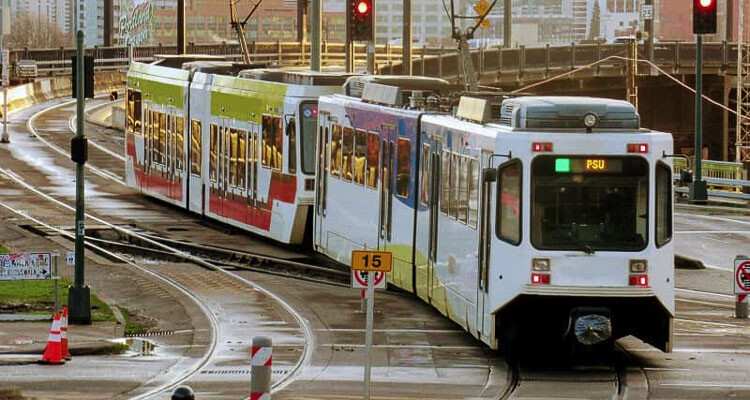
TriMet has continued to push for expansion of the Yellow Line, with plans to extend the line into Washington state across the proposed new I-5 bridge
Taylor Marks
Cascade Policy Institute
Over-promised and under-delivered.
Throughout its 18-year life, TriMet’s Yellow Line MAX has never met its promised ridership projections.
In fact, just before the pandemic hit, Yellow Line ridership was more than 25 percent lower than where it was projected to be for 2020. Following the COVID-19 drop-off in ridership, TriMet now doesn’t expect transit ridership to hit pre-pandemic levels until sometime after 2045.
Because of low ridership, TriMet is failing to abide by its commitments to service frequency. TriMet promised the Federal Transit Administration that Yellow Line trains would arrive every 10 minutes during peak hours and every 15 minutes off-peak. Instead, Yellow Line trains run every 15 minutes during peak periods and every 30 minutes during other parts of the day.
Despite this consistent underperformance, TriMet has continued to push for expansion of the Yellow Line, with plans to extend the line into Washington state across the proposed new I-5 bridge.
Is slow, low-ridership light rail really the best usage of lane space on the proposed I-5 bridge? Or, should the new bridge instead expand lane capacity for trucks and cars usage to reduce congestion on the region’s freeways?
Taylor Marks is a Research Associate at Cascade Policy Institute, Oregon’s free market public policy research organization.
Also read:
- Rising fuel prices could impact road trip plans for WashingtoniansAccording to the American Automobile Association, as of Friday, Washington state drivers are paying an average of $4.67 a gallon for regular unleaded gas – 34 cents higher than a month ago.
- Overnight lane closures on southbound I-5 in Battle GroundWashington State Department of Transportation maintenance crews will close the left two lanes on southbound I-5 April 23-25 to fill cracks in the roadway with melted rubberized material
- 40 Vancouver single family homes in IBR crosshairs plus 35 floating homes on Hayden IslandPublic Records show who is at risk of losing homes and business locations in the proposed Interstate Bridge replacement project.
- Target Zero: April is Distracted Driving Awareness MonthLocal law enforcement agencies, working with the Target Zero campaign, will be out this month trying to stop distracted drivers on Clark County roads.
- $400 million Francis Scott Key Bridge replacement highlights problems with I-5 Bridge projectInterstate Bridge replacement proposal compares poorly with Baltimore and other projects.









